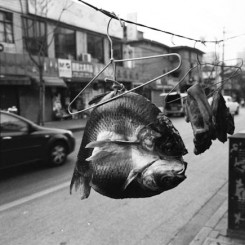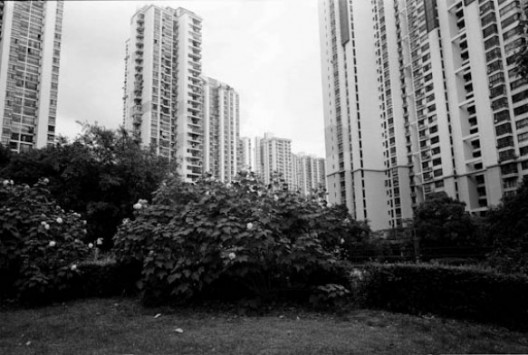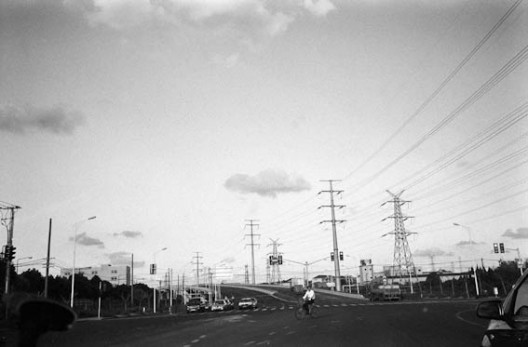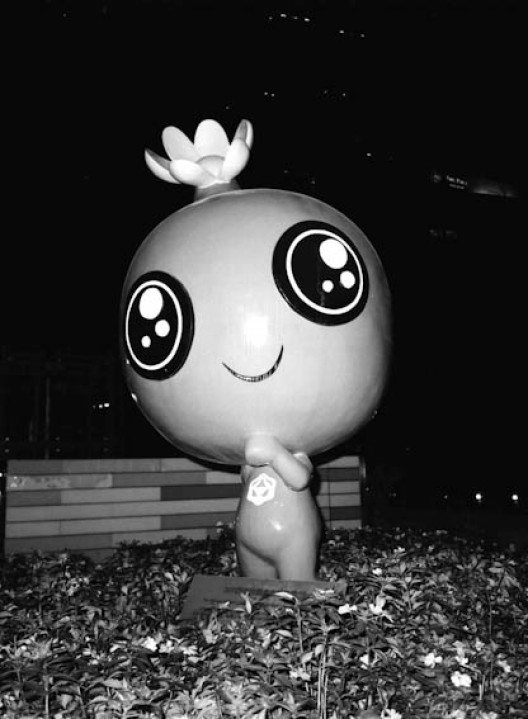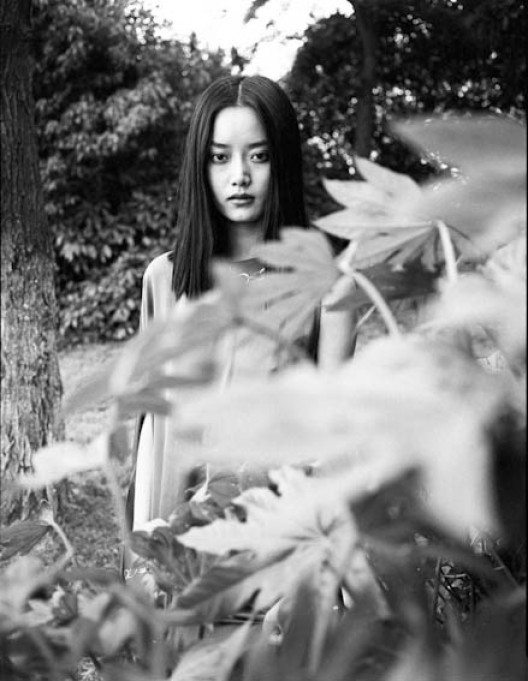“We’re so pretty, oh so pretty…ah now, and we don’t care!”
—The Sex Pistols
Paul Gladston: What the fuck is “Birdhead” when it’s at home?!!!
Ge Si Di: It’s who…Birdhead is the name used by the photographers Song Tao and Ji Weiyu when they are working and exhibiting together. Tao and Weiyu…that’s their first names by the way…
PG: I wasn’t sure…thanks for that.
GSD: Anyway, moving on…Tao and Weiyu were born in Shanghai. They both graduated from the Shanghai School of Arts and Crafts in 2000 and they continue to live and work in Shanghai. Weiyu did a postgraduate course at St Martin’s, graduating in 2004, while Tao stayed in Shanghai establishing a solo career as a photographer and video artist. Tao was something of an angry young man during his formative years, check out his early work…he’s calmed down a lot since.
PG: When did they start working together as Birdhead?
GSD: Tao and Weiyu met at art school in 1998. They started working together seriously in 2004. Weiyu started taking photographs as a teenager. Tao picked up the habit at the age of 20 after borrowing a camera from Weiyu. In June 2004 they spent a month taking and developing photographs together. The photographs, which featured Tao and Weiyu and their surroundings in Shanghai, were edited into the duo’s first album,The Beginning of Summer — and so Birdhead were born.
PG: Very poetic. Why did they choose the name “Birdhead?”
GSD: Well, the standard answer is that they were saving a new folder on their desktop as a place to store some of their photographs and they typed in the Chinese characters for “bird” and “head” randomly as a title for the folder. The sound of the characters in Shanghai dialect has a scatological significance…you know what artists are like.
PG: I just don’t get it. They just seem to take snapshots of themselves and their friends. It’s like all those bloody friendship websites. You know, kids giving peace signs in front of burning cars during anti-capitalist riots… that kind of thing. Anyone could do that. That’s not art.
GSD: In principle, yes they could. Have you seen Tony Hancock’s film The Rebel? I love that scene with the bicycle and the cow…and “shapism”…indigo octagon, how droll. I used to watch a bootleg copy over and over again with my friends in Shanghai during the 80s. We also used to watch that film The Horse’s Mouth with Alec Guinness — it’s amazing how close the painting in that film is to the much later work of Julian Schnabel and David Salle [laughs].
PG: They even got the audience at one of their openings to hang the work on the gallery walls. What a mess that was…a right shambles.
GSD: Yes, at the BizArt Gallery in Shanghai in 2007. The show was called “Welcome to the World of Birdhead, Again.” You must have heard of the avant-garde’s and post avant-garde’s various attempts to problematize the boundary between art and life; or, bringing things more up to date, how about Nicolas Bourriaud’s concept of “relational aesthetics?” You know; artistic intervention into and the interactive remotivation of localized communities as a resistance to dominant forms of social economic and cultural discourse. If you’re not familiar with contemporary critical theory, perhaps you could think instead of the “punk” photography of Nan Goldin and David Wojnarowicz. That might help you to see something of what Birdhead are up to.

PG: Nan who? I’ve heard of “Zhongnanhai”— that song by the Carsick Cars. Where are the pictures of Mao Zedong and the Red Guards? This is supposed to be contemporary Chinese art. Where’s the incisive political critique?
GSD: You’re thinking of Chinese “Political Pop” and “Cynical Realism” of the 1990s. Errr…things have moved on a bit. You need to catch up.
PG: Yeah, but they still lock up artists for criticizing the government in China. Look at Ai Weiwei. He was banged up without charge for months.
GSD: Quite. But there’s more than one way of skinning a Mao [laughs]. (1) To coin a (para)phrase, Birdhead “make local art for local people.” They love Shanghai and they feel deeply rooted there. It’s almost a daily epiphany for them. The work is about the city and how it feels to live within it — an immersive bodily experience. In their view the vastness of Shanghai is an endless source of beauty.
PG: Sounds like Kant’s notion of the mathematical sublime, but without the pain. As an outsider, how am I supposed to understand that? Their photographs could be snapshots of any big city. To return to Hancock, it’s just “confusion” to me.
GSD: It’s not their job to instruct you. Nor do they want to control your view of their work. The work is primarily for and about Birdhead and their friends. The concerns of audiences outside Shanghai are peripheral. Why should they care about you and your cultural confusion? They don’t care. Who are you anyway?
PG: Still, where’s the politics?
GSD: By their own admission Birdhead are indifferent to politics. But, within the People’s Republic of China official political ideology is still pervasive; even though government directives are often less specific than they used to be in Mao’s time. It acts as an immanent discursive framework for the disciplining and self-disciplining of Chinese society. To be engaged with and/or concerned with politics is a form of acquiescence to the dominant ideological order and, in a sense, a retrograde adherence to China’s Maoist past. Indifference to mainstream politics in China — as well as to Western “Cold War” preoccupations with political dissidence — is, arguably, an obliquely political libertarian stance. It’s also a sign of being young and modern. You were young once… you must be able to remember how it felt.
PG: I’ll overlook that last comment. Is there any link here with traditional Chinese culture? Birdhead’s openness to differing interpretative perspectives certainly has an affinity with traditional Chinese aesthetics and the sense of interpretative “tracklessness” associated with the Confucian concept of wan shang.
GSD: You do know something about Chinese culture, then. That could arguably be the case. But what’s tradition? The only contact we have is with the traces of tradition and their remotivation in relation to changing historical circumstances.
PG: Could you repeat that? I didn’t quite catch what you said.
This text draws on a conversation with Birdhead published in Paul Gladston, Contemporary Art in Shanghai: Conversations with Seven Chinese Artists (Hong Kong: Timezone 8–Blue Kingfisher, 2011).
Paul Gladston is Associate Professor of Critical Theory and Visual Culture in the Department of Culture, Film and Media at the University of Nottingham. Between 2005 and 2010, he served as the inaugural head of the Department of International Communications and director of the Institute of Comparative Cultural Studies at the University of Nottingham Ningbo, China.
Ge Si Di is Paul Gladston’s Chinese pen name. “Si Di” can be translated as “think about the truth”. “Ge,” which is nominally a family name, has no particular meaning in this context. The allocation of this name is an ironic one given Paul Gladston’s contrarian adherence to deconstructivist thought and practice.

